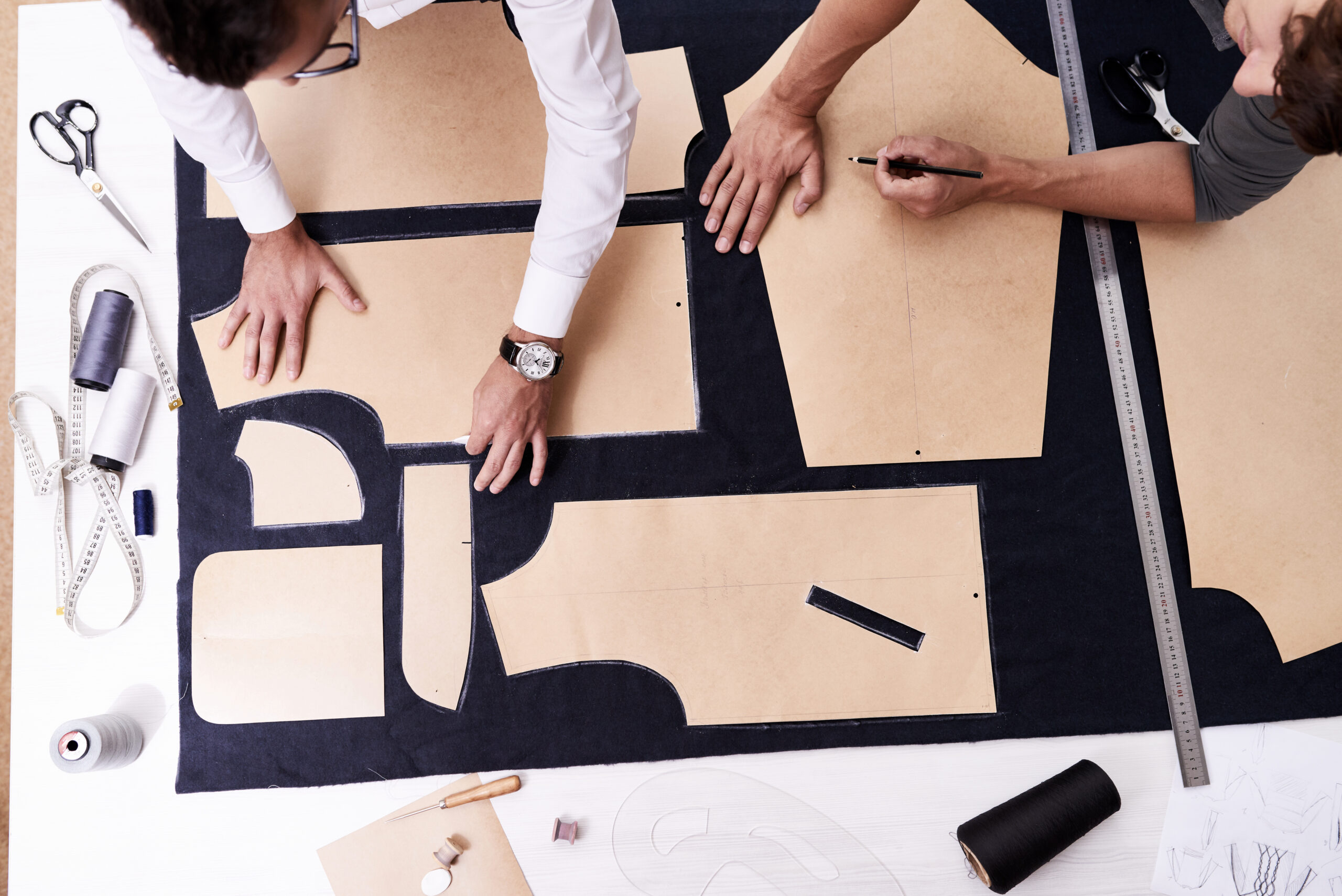Brush up on the basics with our quick pattern terminology guide. Patterns are the foundation of garment production. Get it right, you have success on your hands. Get it wrong, it might be a disaster. This is why it is so important to find out as much as you can before you embark on a big project.
The A to Z
The following are some of the most common terms that you might come across when you flick through the sewing books. Swot up on these and you will soon know your block from your sloper.
Blend
Blending is as it sounds making two separate lines appear as one in the final design. The blend will be part of the pattern that you will be working from.
CAD
The professional’s choice, CAD is a computerized programme, used for the industrial production of garments. It makes grading easy and precise.
Dart Intake
The intake is the extra space, or quantity of fabric, that ensures that when a dart is sewn, the end result isn’t too tight.
Dart Point
This is pretty much as it sounds; the tip and the pointed end of a dart.
Drafting Method
This is one method of pattern making and involves the transfer of a pattern directly onto the pattern paper using straight lines and curves (with the help of the French curve).
Drape
Draping is a fine art and a unique way of pattern making. It involves placing the material against the figure measurements you will be working with and draping until you get the desired effect. Once you have a shape you are happy with, you mark and pin the areas where you want the darts to be and then start creating the shape from this.
Flat Pattern Method
This is one way of pattern making and starts with the creation of the block; a basic interpretation of the garment design which is simply made with the wearer’s measurements. It is then refined by making a series of mock-ups, or toiles as they are sometimes known. Gradually the item takes shape. This is one of the most traditional pattern making methods.
French Curve
This is a particularly useful tool when making your own pattern. It is a way of drawing exact curves, particularly useful when you are making sleeves. They come in all shapes and are a useful addition to the serious dressmaker’s toolbox.
Grading
Grading is how a pattern is made bigger or smaller, depending upon the measurements that you have. It sounds quite mathematical but it is really one way of adapting the existing pattern so that it is going to work, and most importantly, fit!
Notches
Notches are very important when making items of clothing. They are allowances in the fabric for sleeves and armholes and ensure that when sewn together, the fit is aligned properly.
Oak Tag Manila
This is the most commonly used pattern making paper for commercial garment production.
Sleeve Cap
This is the curved top section of the sleeve.
Sleeve Ease
Similar to a notch, the sleeve ease is the extra bit of fabric that ensures that the wearer has movement in the sleeve area.
Truing
If someone says that they are truing their pattern it basically means that they are going through a double-checking process and making sure that all seams, on the left and the right, are measuring up and are of equal length and depth.
Summary
These are the terms that you are most likely to come across when you are embarking on your sewing research. You should now have a better understanding and should hopefully feel more confident about your sewing project!

